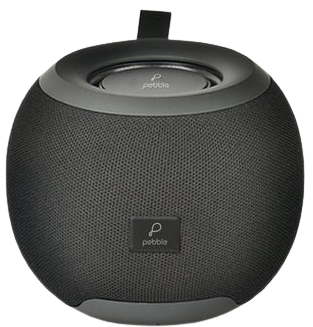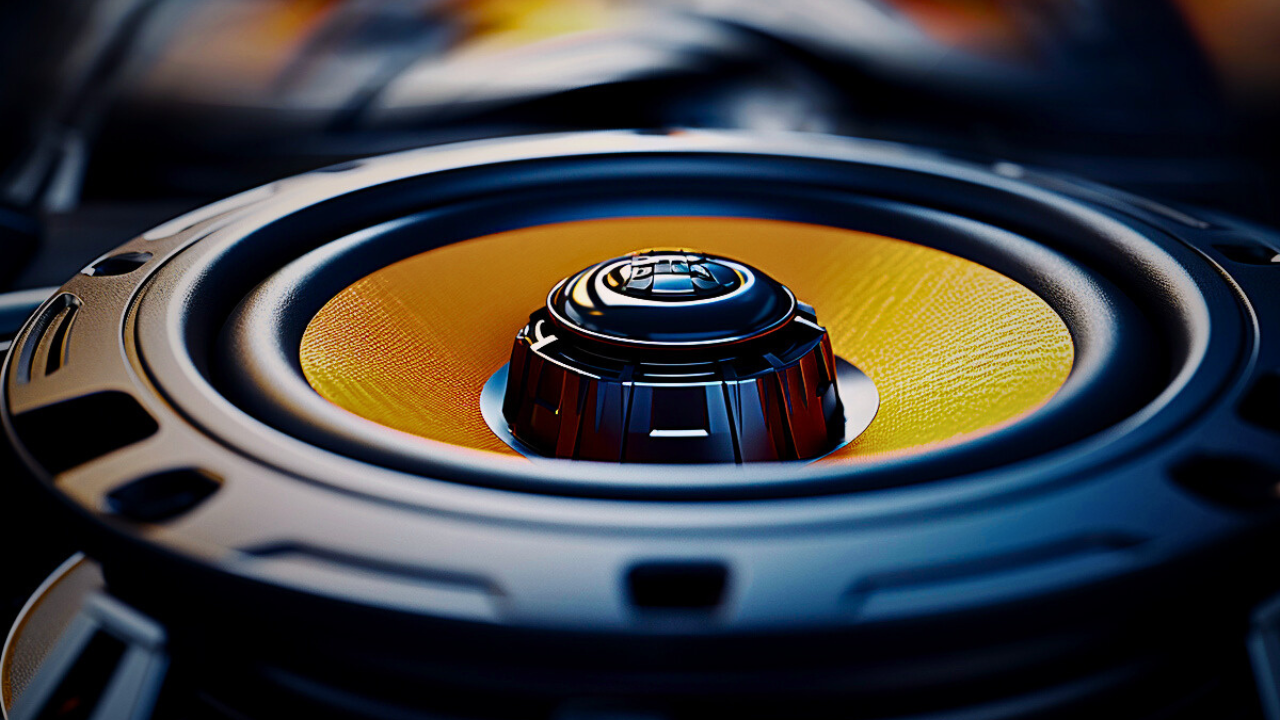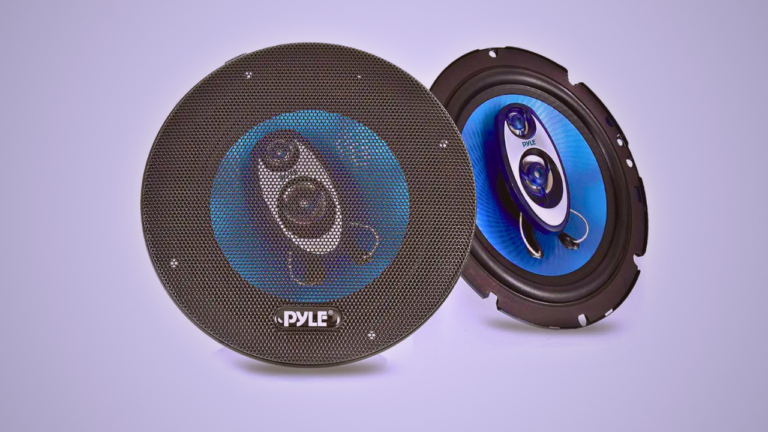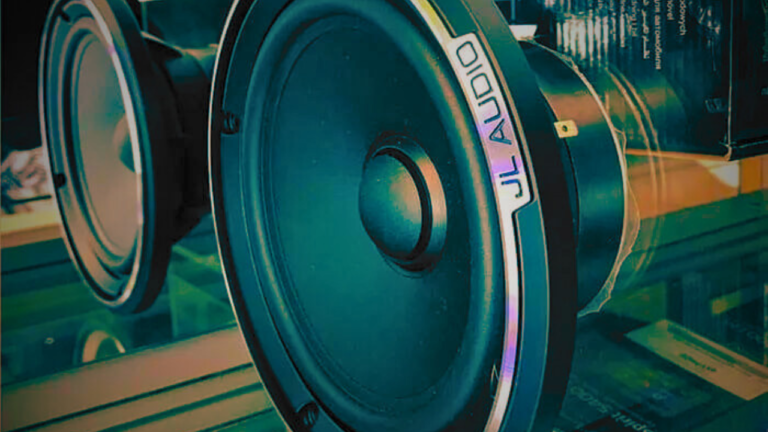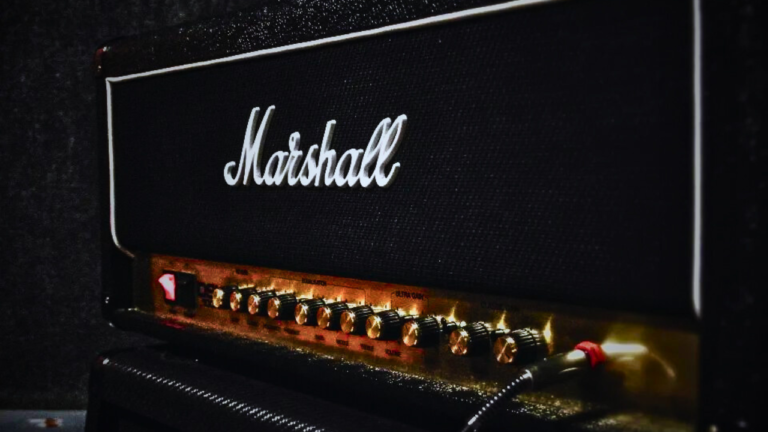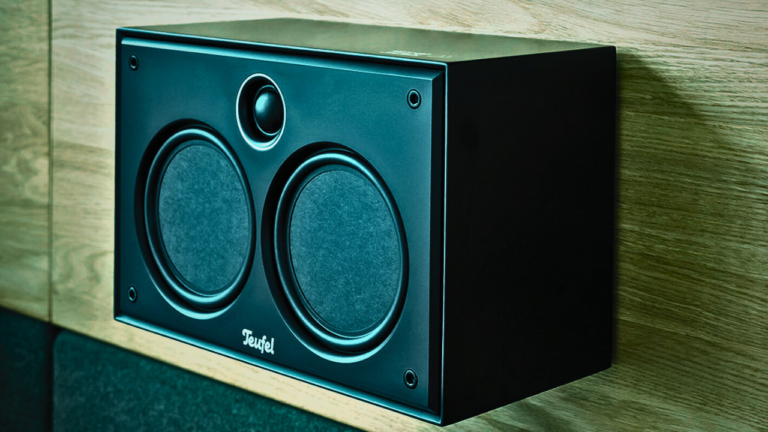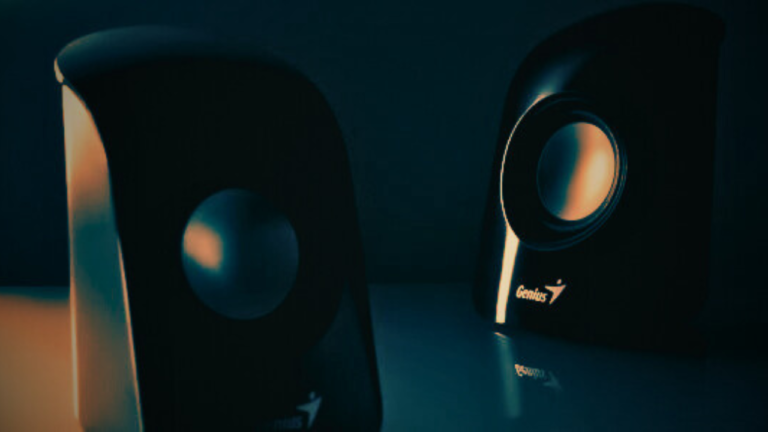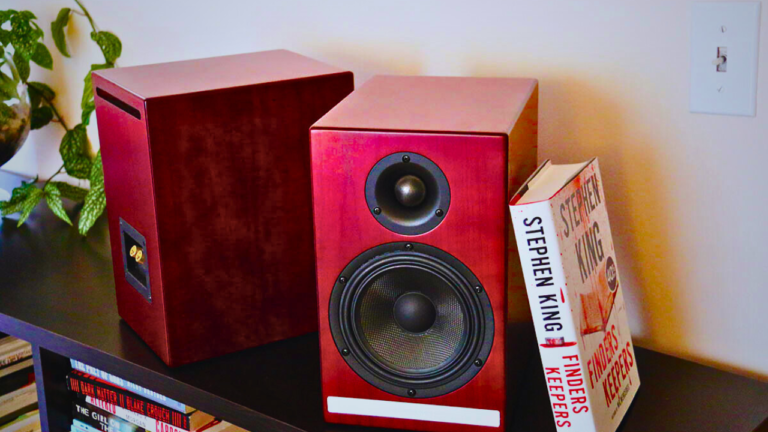Can You Mix Coaxial And Component Speakers?
Hey there, audiophile! You’ve landed at the right place if you’re puzzling over the question, “Can you mix coaxial and component speakers?” We’re going to untangle this question and give you all the insights you need. Let’s dive in.
“Both component and coaxial speakers have their unique strengths that can enhance the sound quality of your audio system. Knowing whether you can mix them, meanwhile, gives you more flexibility and control over your audio experience.”
Now, let’s break down what exactly we’re talking about here. Coaxial speakers, also known as full-range speakers, combine all speaker elements into one unit. You’ve got your woofer for low frequencies and your tweeter for high frequencies, all nestled together.
- Coaxial speakers offer well-balanced sound and simple installation and are commonly used in space-limited audio setups.
- Component speakers: Separate the tweeter and woofer, along with introducing a crossover for superior sound quality.
In the next sections, we will delve into more details about their differences, how they work together, and the pros and cons of mixing them in a sound system. Stay tuned!
Read also: Do Bookshelf Speakers Need A Subwoofer?
What are the key differences between coaxial and component speakers?
Let’s first get a handle on the primary distinctions between coaxial and component speakers.
Coaxial speakers, often referred to as full-range speakers, include multiple speaker elements, such as a woofer for lows and a tweeter for highs, in one unit. This design simplifies installation, as everything you need comes in one package. They are an all-in-one solution, easy to install, and typically more budget-friendly.
On the other hand, component speakers are a separate system where the tweeter and woofer are distinct units. They also include a device known as a crossover, which directs frequencies to the proper component—the lows to the woofer and the highs to the tweeter. This separation allows for greater flexibility in placement and results in superior sound staging and quality. However, they’re usually more expensive and require a more complex installation process.
- Coaxial Speakers:
- All-in-one design.
- Easy and quick to install.
- Usually more affordable.
- Suitable for casual listeners.
Component Speakers:
- Separate components for different sound frequencies.
- Provides superior sound quality and staging.
- Arrangement flexibility in placement.
- Ideal for audio enthusiasts who desire an engrossing audio experience.
Ultimately, the choice between coaxial and component systems comes down to your personal preferences, needs, and budget constraints. Whether you’re after toned-down background audio or immersive surround sound, understanding these basics will equip you with the knowledge to make an informed decision.
How does the sound quality differ when using coaxial versus component speakers?
When you’re talking about sound quality, it’s crucial to keep in mind that the kind of speakers you choose can make an enormous difference. Let’s delve into how sound quality can shift when using coaxial versus component speakers.
Coaxial Speakers: Known as full-range speakers, coaxials are designed to deliver the entire range of sound as effectively as possible. Typically, coaxial speakers have a woofer for low frequencies and a tweeter positioned on top of the woofer to produce higher frequencies. However, because both the woofer and tweeter are operated from the same point, there could be some loss in sound quality.
Although coaxial speakers tend to offer a balanced sound output, they may lack the audio depth and detail that a discerning ear might catch. Hence, if you consider yourself an audiophile or someone who is profoundly invested in high-quality audio performance, you might feel something is missing with a coaxial setup.
Component Speakers: With component speakers, each audio frequency has its own speaker. For instance, high frequencies are delivered by tweeters, and mid and low frequencies are delivered by mid-range drivers and woofers, respectively. As a result, the sound is more dynamic and rich in detail.
One crucial advantage of component speakers is their ability to provide a more live performance feel. This is especially noticeable when listening to music, where each instrument seems to come from a precise location rather than just blending together as it often happens with coaxial speakers. Despite requiring a more complex installation, their superior sound localization and greater depth of audio detail make these types of speakers a favorite among music lovers and audiophiles.
However, it’s worth noting that whether the sound quality is perceived as better or worse can depend heavily on personal preferences. Some listeners may prefer the simplicity and cozy feeling of full-range coaxial speakers, while others may favor the precise and detailed output of component speakers.
What are the potential benefits and drawbacks of mixing coaxial and component speakers?
When it comes to mixing coaxial and component speakers in your audio system, there are certainly advantages and disadvantages you’ll want to consider. It’s all about striking that balance and making sure any pros offset the cons. So, let’s dive right into it!
- Benefits of Mixing Coaxial and Component Speakers:
- Versatility: One of the prominent advantages is the versatility it offers. You can enjoy the best of both worlds by delivering high-frequency sound from the component speakers and mid-to-low-frequency sound from the coaxial speakers. This leads to a dynamic and rich listening experience.
- Cost-effective: Combining both types of speakers could save you some cash. Coaxial speakers are generally less expensive than component speakers. Therefore, in a speaker setup where cost is a key factor, this approach can be quite helpful.
- Efficiency: Blending the two can be efficient in terms of space and power. Coaxial speakers often fit into more compact areas, giving you more flexibility in a limited-space environment than component speakers.
- Potential Drawbacks of Mixing Coaxial and Component Speakers:
- Acoustic Mismatch: One potential downside is an acoustic mismatch. Different speaker types often have distinct sound characteristics. This could make it challenging to achieve uniform sound quality and continuity.
- Technical Complexity: Making these two speaker types work together can become technologically challenging. They may require different power levels and impedance matching, which could require some advanced know-how or perhaps professional installation help.
- Suboptimal Sound Imaging: Because coaxial and component speakers handle frequencies differently, there’s a risk that sound might not blend as seamlessly as you would like, which can affect the overall sound imaging.
In conclusion, while there are clear benefits to mixing these two types of speakers, there are also definite challenges to consider. It all boils down to your priorities and preferences, your budget, and your technical ability. As always, the best advice is to listen to the speakers together in your specific environment to make your final decision. So, go ahead and experiment; the perfect mix might be right around the corner!
What technical aspects should be considered when mixing these two types of speakers?
When contemplating whether to mix coaxial and component speakers, you’ll definitely want to familiarize yourself with a few key technical aspects. This isn’t as daunting as it might sound! Let’s break it down.
Impedance: Impedance is a measure of electrical resistance and is marked in ohms. In simple terms, it tells us how much a speaker resists electric current. Both coaxial and component speakers usually come with an impedance rating of 4 to 8 ohms. When you plan to mix these speakers, they should have the same impedance rating to ensure smooth operation and to prevent damage to your amplifier.
Power handling: Every speaker has a range of power, measured in watts, that it can handle effectively. When combining coaxial and component speakers, their power handling capabilities should ideally match. If one is considerably higher than the other, you’re at risk of either overpowering or underpowering one set of speakers, which can lead to diminished audio quality or potential damage over time.
Sensitivity: Sensitivity is a measure of how efficiently a speaker can convert power into volume. It’s particularly important when mixing and matching speakers because high-sensitivity speakers can produce higher volumes with less power. If you pair high-sensitivity speakers with low-sensitivity ones, you may notice an inconsistent volume level across your speakers.
Frequency Response: Often overlooked, frequency response measures the range of frequencies, in hertz, that a speaker can reproduce. If you’re pairing coaxial speakers with a wide frequency response with components that focus more on particular sound frequencies, the soundscape could feel unbalanced.
- Note: Although compatibility is crucial, keep in mind that none of these factors alone can guarantee optimal audio performance. You’ll need to consider how these elements work together, along with your personal listening preferences.
While the process may seem daunting, a well-informed combination of coaxial and component speakers can truly make a world of difference in your audio experience. Keep in mind, though, that optimal results often require some experimentation and fine-tuning.
Read also: How To Take Apart Bluetooth Speakers With No Screws?
Are there any specific brands or models that are known to work well together when mixing coaxial and component speakers?
Well, mixing coaxial and component speakers may not be an everyday occurrence, but some audio enthusiasts and professionals find a blend of these two systems results in an atmosphere filled with rich, high-quality, and balanced sound. There are even certain brands and models that gracefully harmonize when combined. Let’s delve into some of these:
Kicker: Kicker is a reputable brand in the audio industry and offers both coaxial and component speakers. Their coaxial models include the CS-Series and KS-Series, while their component systems feature the QS-Series and KS-Series. Their balanced construction and consistent power handling ensure they work well together.
Pioneer: Pioneer offers a range of excellent sound systems. Their TS-Series for both coaxial and component speakers can smoothly couple together. With these speakers, you not only get high-quality sound but also versatile installation possibilities.
JBL: JBL offers a goldmine of high-performance audio equipment. In particular, the compatibility between their GTO-Series coaxial speakers and Club-Series component speakers makes them a preferred choice for mixed installations.
Kenwood: For audiophiles, Kenwood is a household name. Their Performance-Series coaxial speakers and Excelon-Series component speakers exhibit synergistic effects when combined, thus delivering an immersive audio experience.
A few silver linings to keep in mind while arranging these mixes include achieving a balanced audio output, ensuring proper mounting space, and aligning with the overall aesthetics and features of your car. Not all sets and brands guarantee equal compatibility. Each car’s interior acoustics vary, and so can the performance of these mixed speaker arrangements.
Remember, setting up your car’s audio system is not just about fitting the pieces of a puzzle; it’s also about piecing together a symphony. A successful combination takes into consideration the nuances each type of speaker brings to the table. Mixing coaxial and component speakers is not merely an act of assembly but an art of balance and harmony.
Conclusion
Regardless of where you land in the debate around mixing coaxial and component speakers, one thing is for sure: your personal audio preferences will play a significant role in your final decision. Actually, there’s nothing fundamentally wrong with mixing the two. It’s just that this method is different from traditional approaches, and as with any unconventional tactic, there are potential pitfalls to be aware of.
Audio enthusiasts and purists may strictly favor one type over the other. Some may sway towards coaxial speakers for their simplicity and compact design, which lend themselves to seamless installations. Others might advocate for component speakers, citing their superior audio quality and flexibility in sound staging.
However, if you’re open to experimentation and wish to get the best of both worlds, then mixing could be the route for you. You could take advantage of the precise, immersive soundstage from component speakers while benefiting from the convenient and economical all-in-one design of coaxials. It’s a bit like having your cake and eating it too!
In conclusion, whether or not mixing coaxial and component speakers is a good idea will largely depend on your individual needs and audio desires. But remember, successful execution lies in understanding the fine technicalities and nuances that each type brings to the table.
If variety is the spice of life, then mixing your speakers could indeed be the hot sauce your car stereo system needs to bring it to life.
And most importantly, always balance your speaker choices with the quality of your receiver or amplifier. The best pairing will be one that not only matches in terms of power requirements but also complements your listening style. So go forth and explore—after all, the perfect sound is a journey, not just a destination.
Read also: Can You Take Speakers On A Plane?
FAQs
Can I install coaxial speakers in the front of my car and component speakers in the rear?
Yes, you can do this. Positioning can have an effect on the overall sound quality, though, so you may want to experiment with different speaker placements.
Will mixing different brands of speakers impact sound quality?
This might happen. Not all speaker brands are created equally, so the sound quality, even when combining coaxial and component speakers, may vary.
Does the power-handling capability of the speakers matter when mixing?
Absolutely. The power handling of your speakers will dictate how much power they can accept from the amplifier without causing damage. It’s important that both your coaxial and component speakers can handle the output of your system’s amplifier.
Should the sizes of the speakers match when mixing them?
Not necessarily. The size of the speakers doesn’t always determine the sound quality. However, bigger speakers usually produce lower frequencies better than smaller ones.
Can I mix two-way coaxial speakers with three-way component speakers?
Yes, you can. Two-way speakers have two sound origin points—the woofer and tweeter—while three-way speakers add a mid-range component. Mixing these won’t inherently cause problems, but do consider the overall balance and sound staging.
How should I adjust my car stereo settings if I have both coaxial and component speakers?
Speaker settings can greatly influence the overall sound quality. Adjust bass, treble, and mid-range settings to your preference, but try to maintain a balance that complements both types of speakers.
Would different impedance levels between coaxial and component speakers cause an issue?
Different impedance levels can have an effect on the power distribution between speakers. An impedance mismatch might reduce the sound quality or even cause damage. Always ensure your amplifier can support the combined impedance of your speakers.
Do I need a specific kind of amplifier if I am mixing coaxial and component speakers?
No specific amplifier is required for mixing these speakers. However, ensure that the amplifier power output matches the collective power handling of both speaker types.
Could different sensitivity ratings between coaxial and component speakers create a problem?
Different sensitivity levels can influence volume levels when the same amount of power is supplied. A lower-sensitivity speaker will sound quieter than a higher one. Consider this when balancing the volume between your speakers.
Is there an optimal setup when mixing coaxial with component speakers?
There is no hard-and-fast rule. The optimal setup would vary based on personal preference, type of music, and listening style. Some people prefer component speakers in front for precision and coaxial speakers at the back for a broader sound-fill. However, you should experiment to find what works best for you.

Hey there! I’m Henry Jack, the voice behind speakerrealm.com, your ultimate destination for everything speakers. Whether you’re a seasoned audio enthusiast or just starting to explore the world of sound, you’ve come to the right place.
At Speaker Realm, I dive deep into the realm of speakers, bringing you comprehensive reviews, insightful guides, and the latest trends in the industry. From floor-standing behemoths to compact bookshelf wonders, I cover it all.
I’m passionate about helping you find the perfect speakers to elevate your audio experience. Whether you’re setting up a home theater, upgrading your sound system, or just looking for some quality audio gear, I’ve got you covered.
But Speaker Realm isn’t just about technical specs and performance metrics—it’s also about the art and science of sound. I explore topics like acoustic design, speaker technology, and the impact of audio on our lives.
So whether you’re a casual listener or a hardcore audiophile, join me on this journey through the world of speakers. Let’s turn up the volume and explore the endless possibilities of sound together at speakerrealm.com!
